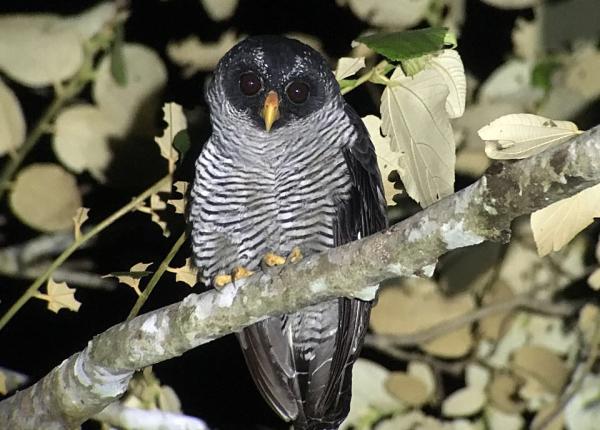Did You Know?
- The Black-and-white Owl is one of the few owl species found in the tropics that has been documented preying on barn swallows.
- Most of what scientists know about the nesting behavior of this owl comes from just four nests that were studied in Guatemala.
How The Peregrine Fund is Helping
Though The Peregrine Fund does not work directly with Black-and-white Owls, our efforts in scientific research, habitat conservation, education, and community development help conserve birds of prey around the world. We also supply literature to researchers from our avian research library, which helps scientists around the world gather and share important information on raptor conservation. Our work with the Neotropical Raptor Network helps conserve raptors by fostering collaboration and communication among raptor enthusiasts in the region. And, finally, our support of the Global Raptor Information Network gives raptor researchers tools to more efficiently conduct their own studies while contributing to a global program. It also provides citizen scientists a way to participate in raptor science and conservation.
Where They Live
The Black-and-white Owl is a Neotropical species. It can be found in southern Mexico, throughout much of Central America, and into Colombia, Venezuela, and Peru. Within this range, these owls are found mostly in evergreen and semi-deciduous forests, marshy woodlands, tree plantations, and even in mangroves.
What They Do
True to its name, the Black-and-white Owl is just that - mostly black and white, with the exception of its yellow beak and feet. It is characterized by a dark back, a heavily lined breast and belly, and a black face. It has a round head and, unlike the Eurasian Eagle-owl, lacks ear tufts, which aren't ears at all, but feathery protrusions that resemble some mammals' ears.
Like most owls, Black-and-white Owls are nocturnal - meaning they actively fly, hunt, find mates and just about their business at night. During the day, the stay pretty well hidden, roosting (resting) among dense foliage.
Why They Need Our Help
Even though this beautiful owl is categorized as a species of Least Concern, that doesn't mean it isn't facing some major threats. As its habitat is being destroyed or altered, especially when it is converted into agricultural fields, the owl population suffers.
What They Eat
This owl has a healthy diet of insects, such as large beetles, bats, birds, rodents, and amphibians!
Nests, Eggs, and Young
Like most owls, the Black-and-white Owl doesn't build its own nest. Instead, it lays its eggs in epiphytes growing on tall trees, or in natural tree cavities, or even in stick nests built and abandoned by other birds. The female likely lays one egg, which she incubates while the male brings her food. Other than this information not much else is known about the breeding biology and behavior of Black-and-white Owls!
Black-and-white Owl and the World Center for Birds of Prey
Though the World Center for Birds of Prey is far from Black-and-white habitat, it does offer fun ways to learn about raptors, including owls. Interactive activities, tours, interesting videos and a children's room with activities from coloring sheets to quizzes to costumes await you. At our visitor center, you can see live owls up close - such as a Verreaux's Eagle-owl or a Western Screech-owl, and learn about the wonderful and interesting adaptations they have in order to survive in their respective habitats. There is also a touch table with owl feathers and other natural objects available for exploration. Take a stroll along a short nature trail and look for Common Barn-owls or even a Northern Saw-whet Owl perched in the trees.
References:
Sandoval, L. E. Biamonte, and A. Solano-Ugalde "Previously Unknown Food Items in the Diet of Six Neotropical Bird Species," The Wilson Journal of Ornithology 120(1), 214-216, (1 March 2008). https://doi.org/10.1676/07-012.1
Stearns, A. (2020). Black-and-white Owl (Ciccaba nigrolineata), version 1.0. In Birds of the World (T. S. Schulenberg, Editor). Cornell Lab of Ornithology, Ithaca, NY, USA. https://doi.org/10.2173/bow.bawowl1.01










